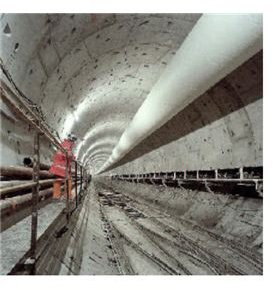Channel Tunnel is the largest engineering project in history of humanity – Did you know it?
Introduction:
The Channel Tunnel is also known as the Euro Tunnel and it is a rail link beneath the English Channel between Cheriton next to Folkestone, Kent, and Coquelles close to Calais. The Channel tunnel is said to be one of the biggest civil engineering projects of the 20th century. The final design facility of the tunnel is 600 trains per day both ways.
Surveying for the Channel Tunnel
Marine survey and samplings by Thomé de Gamond were conducted during 1833–67, basing the seabed depth at a maximum of 55 meters (180 ft) and the connection of geological strata. Surveying was conducted for many years, with 166 marine and 70 land-deep boreholes being bored and more than 4000 kilometers of marine geophysical study completed. Surveys were attempted in 1958–59, 1964–65, 1972–74 and 1986–88.
The surveying which was undertaken in 1958–59 provided for plunged tube and bridge plans as well as a bored tunnel which aided in the investigation of a wide area. Marine geophysics surveying for civil engineering tasks was in its early childhood during this time. The positioning and resolution from seismic profiling was very poor. The surveys undertaken during 1964-65 centered on a northerly route which left the English coast at Dover harbor; applying 70 boreholes, a region of intensely weathered rock with high permeability was found just south of Dover harbor.
A more southerly course of surveying was looked into in 1972–73 and the path was established to be possible. At Sangatte on the French side a deep barb with adits was made. The 1986–97 survey reinforced the previous findings and the type of the gault clay and tunneling medium were also investigated. It was discovered that chalk marl made up 85% of the route. Geophysical techniques from the oil industry were applied.
Once the geological surveying was concluded the route for the three tunnels was depicted through a layer of soft impermeable rock known as chalk marl. No other medium was suitable for tunnelling purposes. The chalk marl permitted the tunnel boring machines (TBMs) beginning from the British coast to be projected for a speedy approach, and these TBMs often made out over 300 meters of tunnel in a week.
Tunneling
Tunneling - linking England and France was a key engineering challenge, with the only example being the undersea Seikan Tunnel in Japan. A serious danger with underwater tunnels is main water inflow due to the water force from the sea above below weak ground conditions.
The tunnels were all traced with pre-cast concrete segmented rings, excluding areas of deprived ground or at tunnel links or overlaps, where ductile iron linings were applied. The concrete in particular was of very high intensity and tightness to protect the steel reinforcement. Subaltern shield against corrosion was also furnished through surface coating and planning for cathode protection.
Channel Tunnel

Conclusion
The tunnel system is maintained dry with the help of 5 pumping stations and sumps, 3 built under the sea and 1 on each shore. A remarkable characteristic in the rail tunnels is the setting up of a cooling system intended to offset the build up of heat generated by fast-moving trains. Chilled water is pumped up through cooling pipes so that the tunnel air is kept at a cosy temperature.
Quick Recall
When built: 1994
Height: 7.6m
Length: 50.45km
Depth: 40-75m below the sea bed
Workforce: 13,000
Timescale: Six years
Construction material: Concrete and steel
Capacity: 4 million cubic meters of chalk were excavated on the English side alone
Construction Cost: About $16 billion in United States dollars. (Courtesy: https://www.discoverychannel.co.uk/machines_and_engineering/tunnels/index.shtml)
